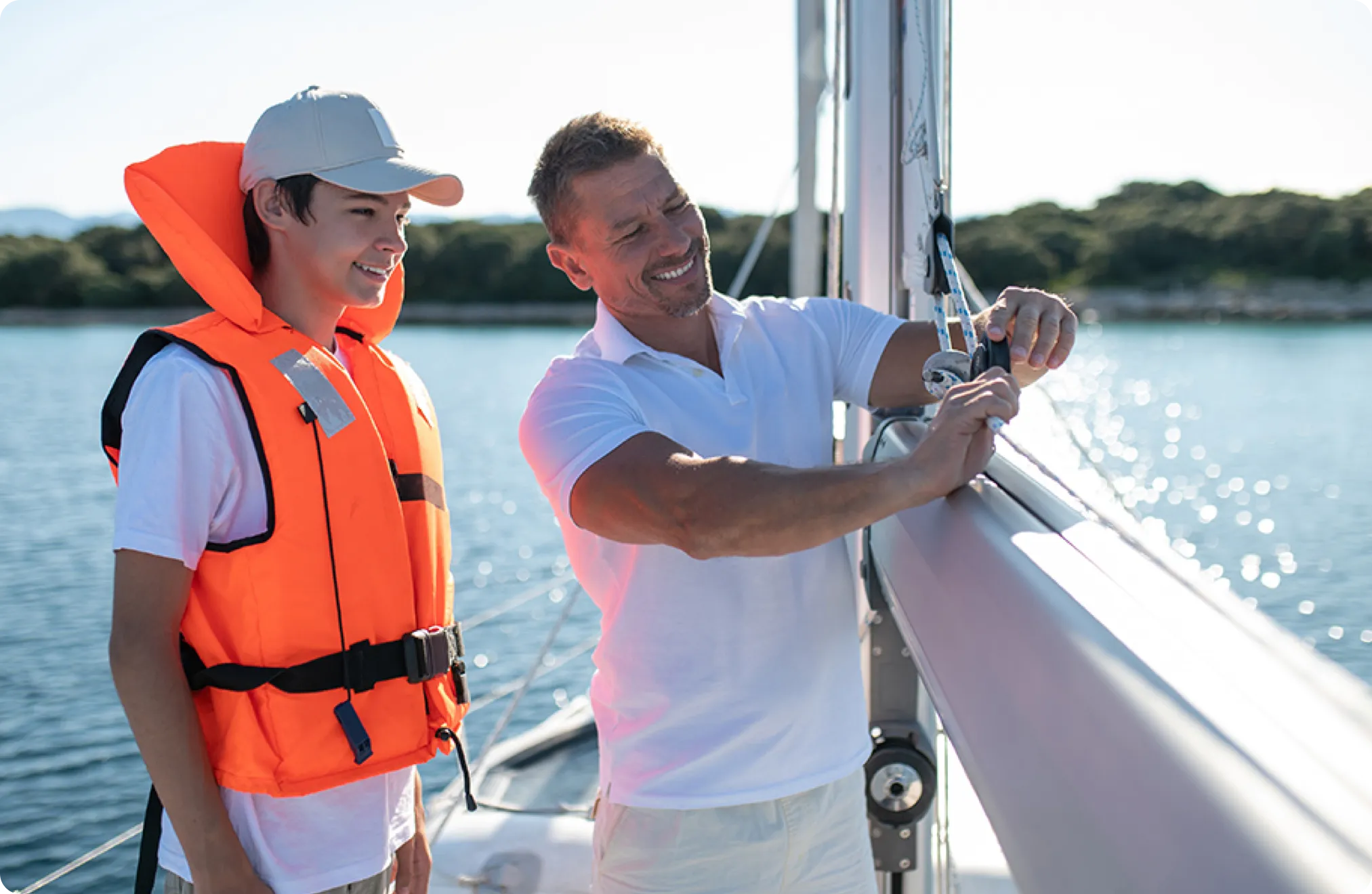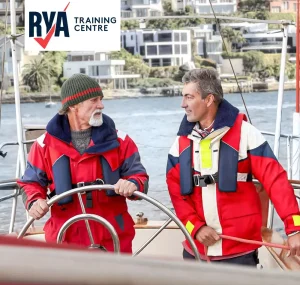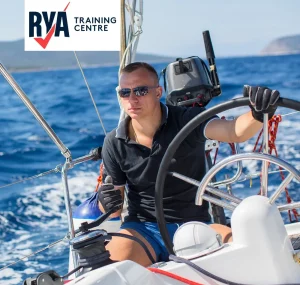Learners gain a working knowledge of nautical terminology, rigging, and sails, ensuring they understand day-to-day orders onboard.
CategoryRYA Cruising Courses / Beginner / On Water Practical

Designed with novices in mind, the Competent Crew course offers a comprehensive introduction to cruising, focusing on personal safety, seamanship, and helmsmanship.
Upon completion, participants will be equipped to serve as valuable members of a cruising yacht’s crew.
The course runs over five days, or in three two-day segments, which may also be scheduled non-consecutively (comprising three-day and two-day blocks).

Learners gain a working knowledge of nautical terminology, rigging, and sails, ensuring they understand day-to-day orders onboard.

Participants can bend on, set, reef, and handle sails, operating sheets, halyards, and winches to manage sail shape and power efficiently.

They can coil, stow, secure ropes, manage warps, and tie essential knots (figure-of-eight, clove hitch, bowline, round turn and two half hitches, reef knot, rolling hitch, single/double sheet bends), applying them safely onboard.

Trainees understand fire precautions, fire-fighting techniques, and onboard hazards, including the use of gas and carbon monoxide alarms.

They understand how to comply with guidelines for wearing harnesses, life jackets, and buoyancy aids to maintain onboard safety.

Students understand the correct actions to recover a casualty and the effects of cold-water shock, preparing them for prompt, effective response.

They understand how to launch and board a life raft and know when to use distress flares, gaining vital lifesaving knowledge.

Participants understand practices for burgees and ensigns, reducing harbour noise, and protecting the marine environment.

They can keep an efficient lookout, applying fundamental collision-avoidance and navigational principles.

Learners understand tender loading rules, kill cords, safety equipment, and can handle a dinghy under oars.

Trainees gain a knowledge of the Beaufort Scale and understand forecasting services, helping them plan safe voyages.

They learn how seasickness can affect efficiency and understand methods to reduce its impact.

Students understand basic sailing principles and can steer and trim sails on all points of sail, maintaining a compass course under both sail and power.

They can perform daily deck and below-deck tasks, supporting the vessel’s routine and safety operations.
This well-rounded course equips aspiring sailors with both foundational knowledge and hands-on skills required for safe and efficient yacht operations. You’ll begin by learning sea terms and familiarizing yourself with the yacht’s various parts, its rigging, and sails—ensuring you understand any orders given regarding day-to-day onboard tasks. From there, practical sail handling sessions will enable you to bend on, set, reef, and adjust sails, as well as operate sheets, halyards, and their winches confidently.
Throughout the ropework component, you’ll practice coiling, stowing, and securing ropes to cleats or bollards, along with mastering fundamental knots—figure-of-eight, clove hitch, bowline, round turn and two half hitches, reef knot, rolling hitch, and single or double sheet bends—each chosen for its essential onboard purpose. Staying safe at sea is paramount, so dedicated modules cover fire precautions and emergency responses, proper handling of gas or carbon monoxide alarms, and compliance with personal safety equipment guidelines. You’ll also examine the steps to recover a man overboard and consider the effects of cold-water shock, before learning how and when to deploy a life raft or distress flares.
In addition, the course highlights important maritime customs such as the use of burgees and ensigns, quiet behaviour in harbour, and protecting the marine environment. You’ll discover the principles behind collision avoidance, hone your lookout skills, and understand tender usage—especially safety rules, kill cords, and proper loading. Meteorological awareness is introduced through the Beaufort Scale and guidance on finding reliable forecasting services. You’ll also explore ways to manage seasickness and maintain working efficiency underway.
Finally, you’ll apply helm skills and sailing principles, steering the yacht on all points of sail and trimming sails effectively. You’ll be able to steer a compass course under both sail and power, and demonstrate general deck and below-deck duties essential to the vessel’s daily routine. By the end of this comprehensive program, you’ll be prepared to contribute responsibly to a yacht’s crew, whether cruising or embarking on extended voyages.


Let us know how we can help you, simply fill out the details below.
Please fill out the form below to receive price details
Let us know how we can help you, simply fill out the details below.